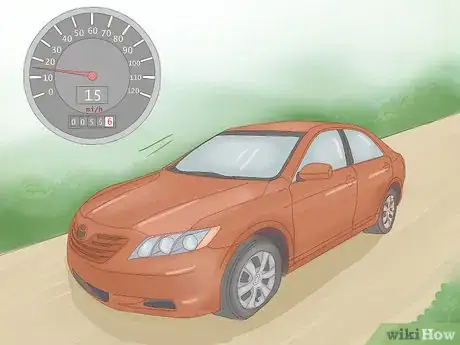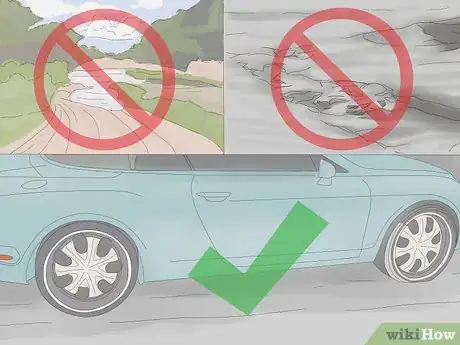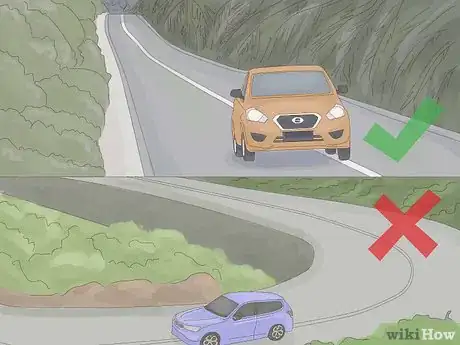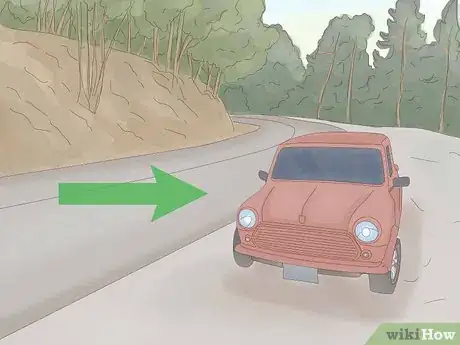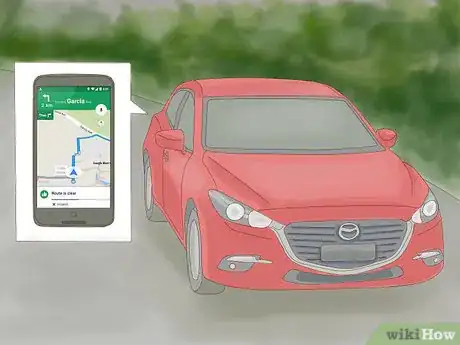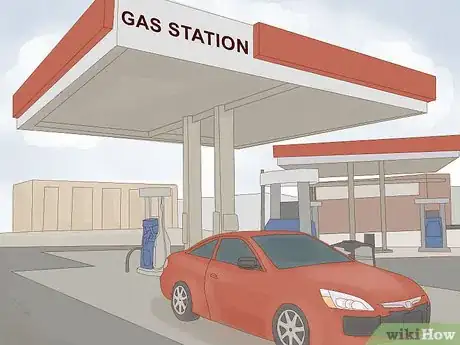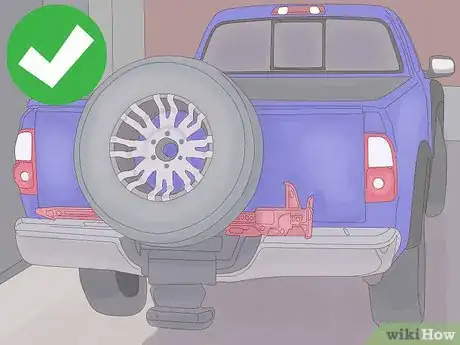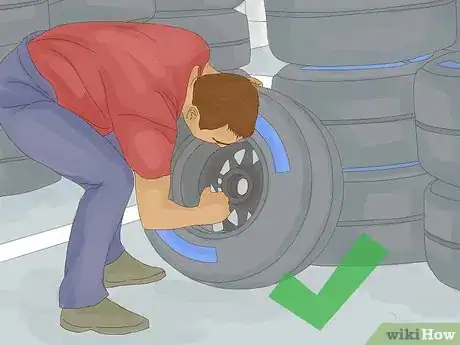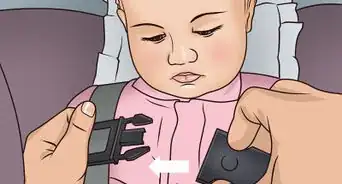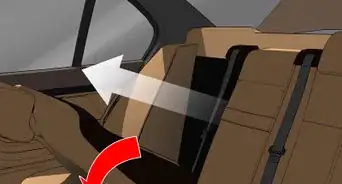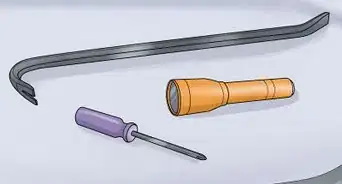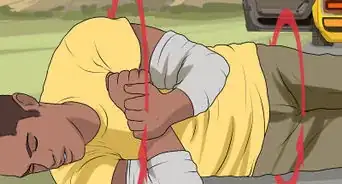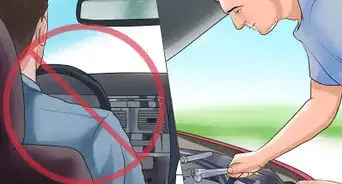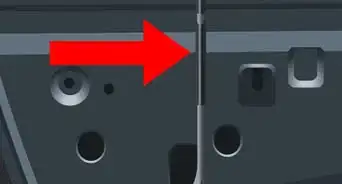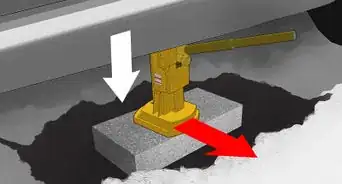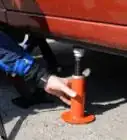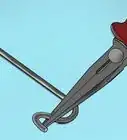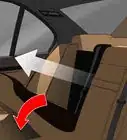This article was co-authored by Howard Fleischmann. Howard Fleischmann is an Automotive Tire and Repair Specialist and the CEO of Community Tire Pros & Auto Repair, with ten locations throughout Phoenix, Glendale, Yuma, and Casa Grande, Arizona. Howard specializes in full-service auto repair and tire replacement and care for domestic/imported vehicles and large trucks. Howard’s dedication to Community Tire Pros & Auto Repair has earned their team multiple awards and features including the 2021 Phoenix Magazine AZ State 48 “Best of the Best!”, the 2020 “Best of Phoenix” in Auto Repair, the 2013 Master SBD award, the 2013 National “Top Shop” award by Tire Review, the 2012 Diversity Champions Phx Business Journal, the 2009 BBB Ethics award, the 2008 Phx Chamber of Commerce Impact Award -” Small Business of the Year”, and the 2008 ASU Spirit of Enterprise award. Howard is often referred to as “The Car Guy” for local TV stations and is a regular on TV’s Channel 3 Sunday, Good Morning Arizona monthly.
There are 13 references cited in this article, which can be found at the bottom of the page.
This article has been viewed 137,935 times.
You’ve just gotten a flat and, to make matters worse, you’re nowhere near a place where you can safely pull over and change it. What now? Luckily, it’s usually possible to cruise a couple hundred yards on even the sorriest set of tread. While driving on a flat tire isn’t recommended, as it can cause permanent damage to your car’s wheels, there may be situations where you find yourself with no other choice. In these instances, it’s important to remember to go slow, stick to smooth, flat ground and come to a complete stop somewhere safe as soon as you can.
Steps
Running on a Flat Tire
-
1Drive slowly. Try not to go faster than about 15-20 miles per hour on a flat. Doing so may cause irreparable damage to the metal wheel beneath the tire, and could even cause you to lose control of the vehicle. Press down on the accelerator lightly, or, if possible, idle along until you find a suitable place to pull over.[1] [2]
- Traveling at high speeds will just damage your wheel faster, as higher speeds will subject the wheel to greater forces, without the tire to protect it from bumps and debris.
- If you’re headed downhill, let the car coast gently on its own momentum with your foot poised on the brake.
-
2Keep the vehicle on smooth, flat ground. Avoid potholes, steep inclines and broken patches of asphalt. Rough road conditions can bang up your rims, causing them to bend and putting your vehicle out of alignment. You should also beware of wet or sandy terrain that could cause you to slip, sink or become stuck.[3]
- Paved roads, parking lots or the shoulder of the highway or interstate will be your best bet.
Advertisement -
3Go as straight as possible. Don’t take any steep curves or try to navigate winding avenues while you look for place to pull over. Instead, coast ahead slow and straight, turning the wheel gently when you have an opportunity to exit the flow of traffic. Take the most direct route to get where you’re going.[4]
- Resist any drag created by the flat by holding the wheel steady, but don’t struggle against it so hard that it compromises your ability to steer.
- Turning sharply places more strain on the edges of the rim.
-
4Pull over to a safe spot. The first opportunity you get, make your way off the main road and head for the first place you see where traffic is not too heavy.[5] Make sure the vehicle has come to a complete stop, then engage your parking brake and turn on your emergency flashers to signal to other motorists that you’re experiencing car trouble.[6]
- Pull over somewhere level in case you need to lift your car up on a jack.
- Don’t get out of your car until you’re sure that traffic is clear on the driver’s side.[7]
-
5Don’t go far. You should never attempt to drive any further than a couple hundred yards on a flat tire, even if it isn’t completely deflated. This may not be enough distance to get you to an auto garage, but you can at least creep along until you’re away from the hazards of the highway. Remember to go slow and pull over as soon as you’re able.[8]
- You can change a tire almost anywhere in a pinch, so don’t bother trying to find a designated parking area for your car.
- Get yourself to safety before worrying about how to fix your vehicle.
Dealing with a Flat
-
1Try to make it to a gas station. If there’s a gas station within sight, and you’ve been fortunate enough to avoid a total blowout, you may be able to steer the vehicle in carefully and inflate the tire at an air pump. Gas stations also typically stock the sort of supplies needed for basic auto repairs, like tire patching kits, which means there are few better places to be if you experience a flat.[9]
- Don’t push yourself too hard to get to a gas station. If your destination is more than half a mile away, you’ll be better off pulling over where you are.
- In some cases, gas station attendants are trained to be able to help stranded drivers change flat tires.[10]
- If you can make it to a tire store, even better, but don't push it.[11]
-
2Keep a spare in your vehicle. Most newer vehicles comes equipped with a spare tire either on the back or in a separate compartment in the trunk. If your car or truck is among them, you’re in luck. Just switch the flat tire out with the spare and you’ll be able to make it to a garage for a full repair.[12]
- If you’re not sure how to change a tire yourself, consult your vehicle’s owner’s manual for a step-by-step walkthrough.
- Compact spare tires (also known as “donuts”) are designed to carry you about 50 miles maximum, and can only withstand speeds up to 55mph.[13]
-
3Call a tow truck. If you aren't able to make it to a garage or change the tire yourself, you may have no choice but to get a tow. Once you make the call, a wrecker service will be dispatched to take your vehicle to the nearest auto repair center so that you can get the problem fixed without delay. In some cases, the person that shows up may even be able to patch the damaged tire right then and there.[14]
- Signing up for a roadside assistance program like AAA can be a big help should you find yourself in a bind.
- Typically, you can expect to wait 45 minutes to an hour for the tow truck driver to arrive. That’s still probably not much longer than it would take for you to change the tire yourself.
- Keep your cell phone charged when you’re on the road in case you need to place a call in the event of an emergency.[15]
-
4Invest in a set of run flat tires. Run flat tires are specially engineered to be safe to drive on even after they’re totally deflated. The reinforced flat acts as a cushion against the wheel that eases the stress of coasting to a safe stopping location. Whether you don’t have any experience changing a tire or you’d simply prefer not to, run flat tires can save you quite a bit of inconvenience.[16]
- Some run flat tires can allow drivers to keep going for up to 100 miles at a reduced speed before wearing out.[17]
Warnings
- If you end up accidentally damaging your rims, you'll likely have no choice but to have the entire wheel replaced.⧼thumbs_response⧽
- Over-inflating a tire can cause it to explode suddenly.⧼thumbs_response⧽
Things You'll Need
- Spare tire
- Car jack and tire changing tools
- Reflector lights
- Roadside assistance service membership
- Tire pressure gauge
- Charged cell phone
References
- ↑ http://www.livescience.com/29473-drive-on-a-flat-tire.html
- ↑ Howard Fleischmann. Automotive Tire & Repair Specialist. Expert Interview. 4 June 2021.
- ↑ https://www.idrivesafely.com/driving-resources/how-to/change-a-tire/
- ↑ https://www.edmunds.com/driving-tips/how-to-survive-the-top-10-driving-emergencies.html
- ↑ Howard Fleischmann. Automotive Tire & Repair Specialist. Expert Interview. 4 June 2021.
- ↑ http://www.dmv.org/how-to-guides/changing-tire.php
- ↑ https://www.farmers.com/inner-circle/car-safety/10-steps-for-handling-common-roadside-emergencies/
- ↑ http://www.livescience.com/29473-drive-on-a-flat-tire.html
- ↑ http://www.cartalk.com/content/change-flat-car-talk-0
- ↑ https://www.reference.com/business-finance/gas-station-cashier-job-description-46bd478c59091543
- ↑ Howard Fleischmann. Automotive Tire & Repair Specialist. Expert Interview. 4 June 2021.
- ↑ http://www.dmv.org/how-to-guides/changing-tire.php
- ↑ https://www.autoguide.com/auto-news/2013/08/how-far-can-you-drive-on-a-spare-tire.html
- ↑ http://www.consumerreports.org/cro/2012/05/roadside-assistance-beware-the-gaps/index.htm
- ↑ http://www.bankrate.com/finance/auto/20-must-haves-in-your-car-emergency-kit-1.aspx
- ↑ http://www.bridgestonetire.com/tread-and-trend/drivers-ed/run-flat-tires
- ↑ https://www.edmunds.com/driving-tips/run-flat-tires-a-primer.html
About This Article
If you need to drive a short distance on a flat tire, drive slowly and avoid going over 20 miles an hour to avoid putting more pressure on the tire. Keep your vehicle on smooth, flat ground and drive as straight as possible to minimize the damage to your rims. If you need to take a corner, turn the wheel gently. If you’re going downhill, let the car coast gently and only use the break if you have to. Don’t drive more than a couple hundred yards, even if your tire’s not completely deflated, and pull over safely as soon as you can. Try to stop on level ground in case you need to lift your car up on a jack. For more tips, including how to change a flat tire, read on!
